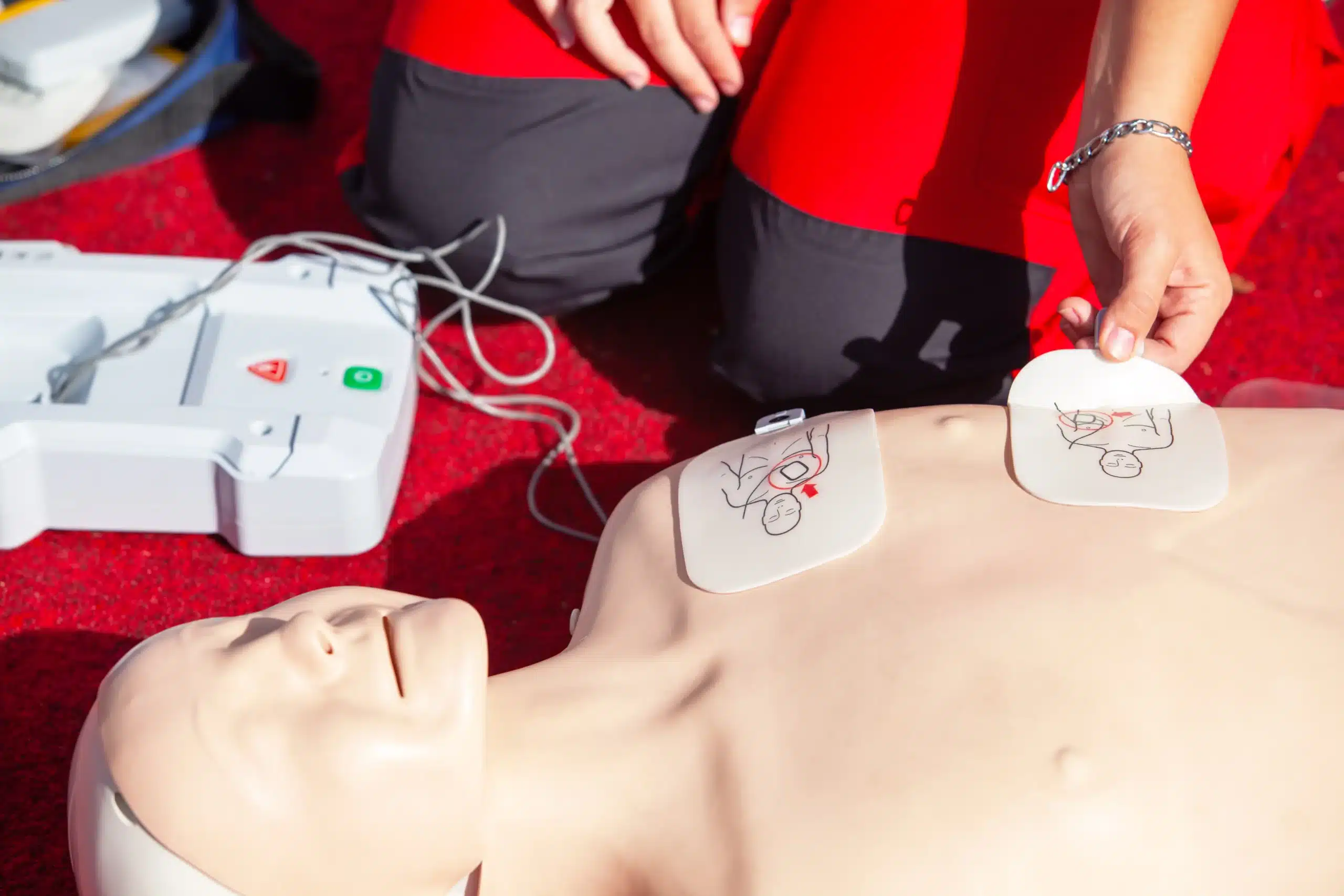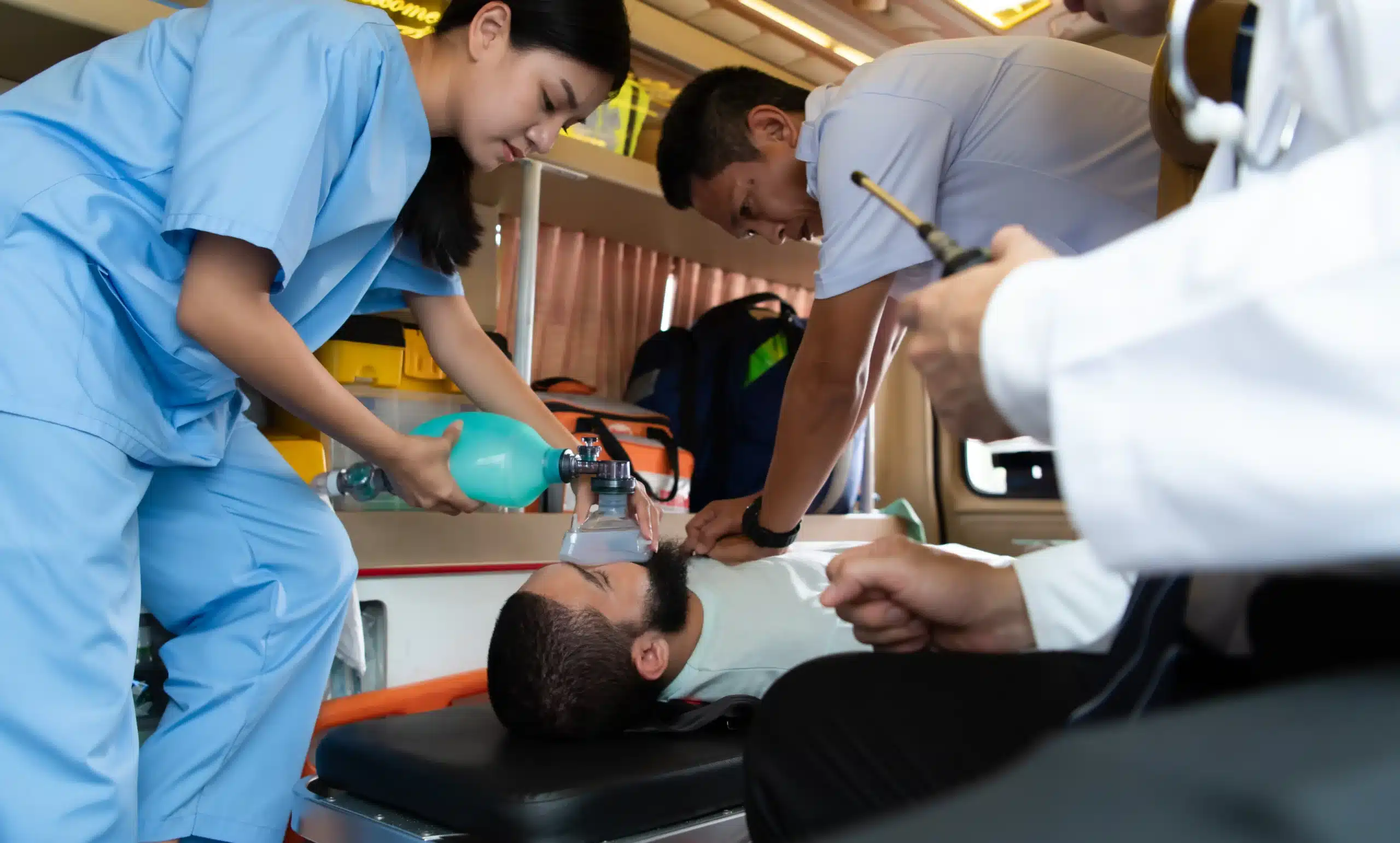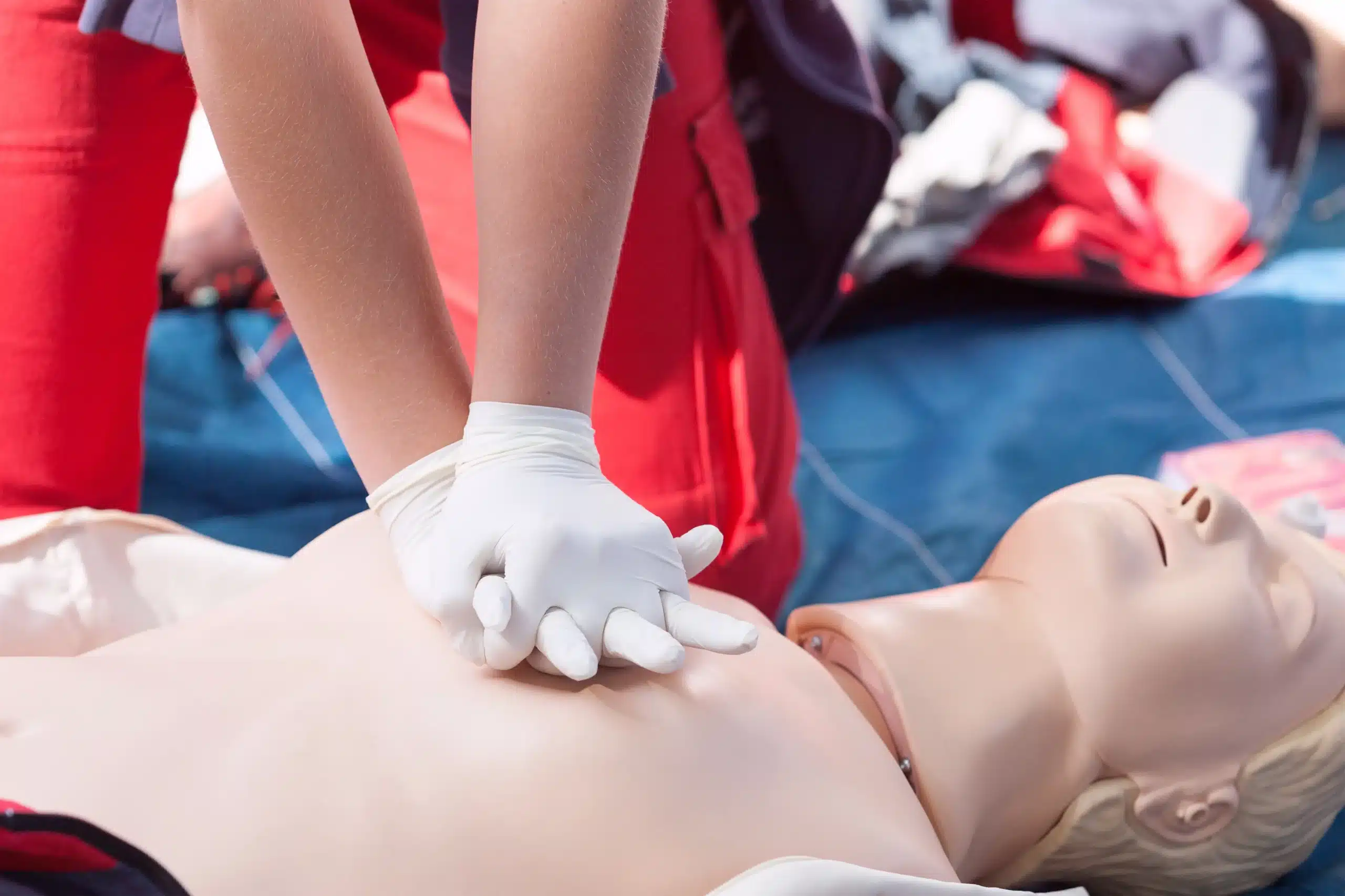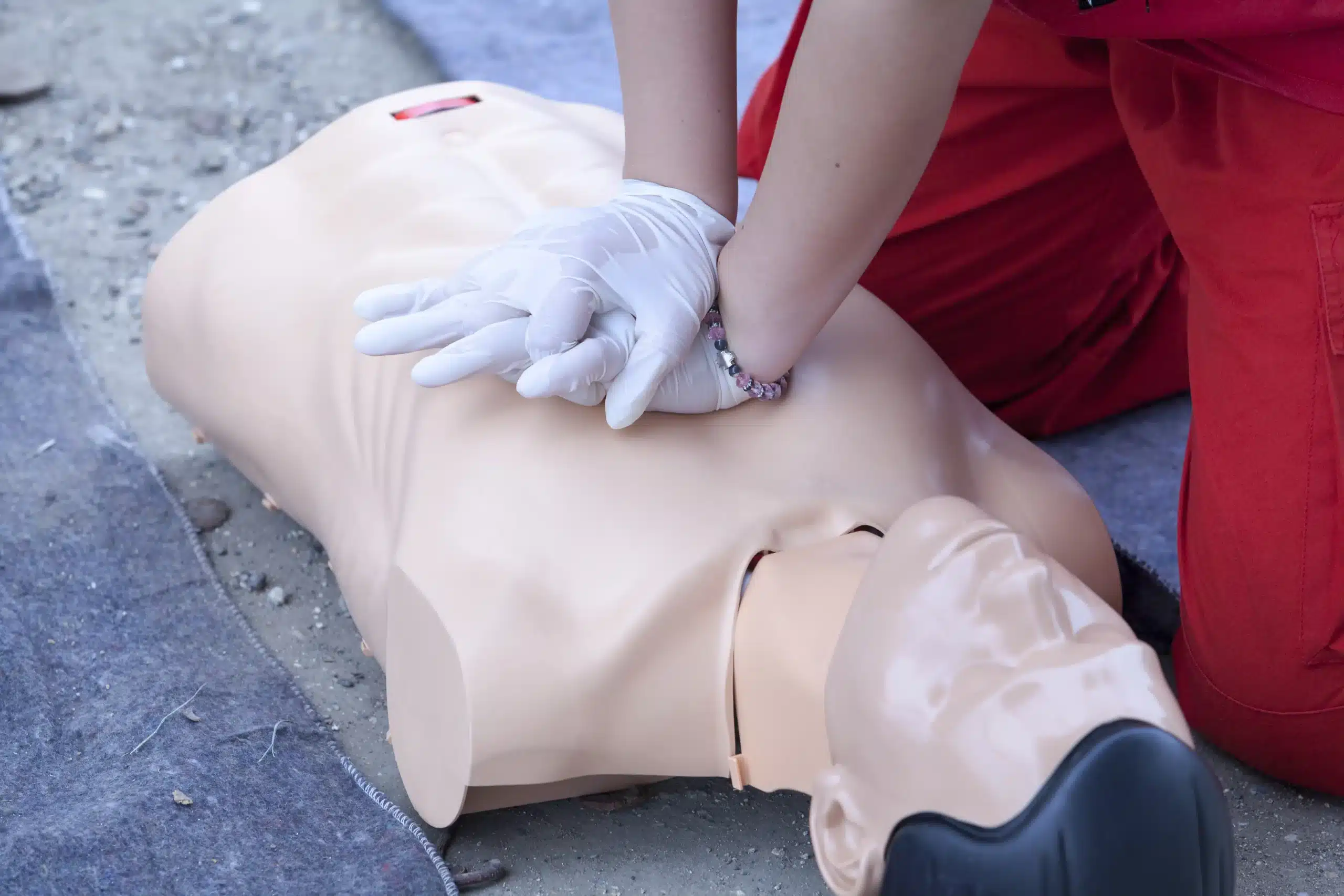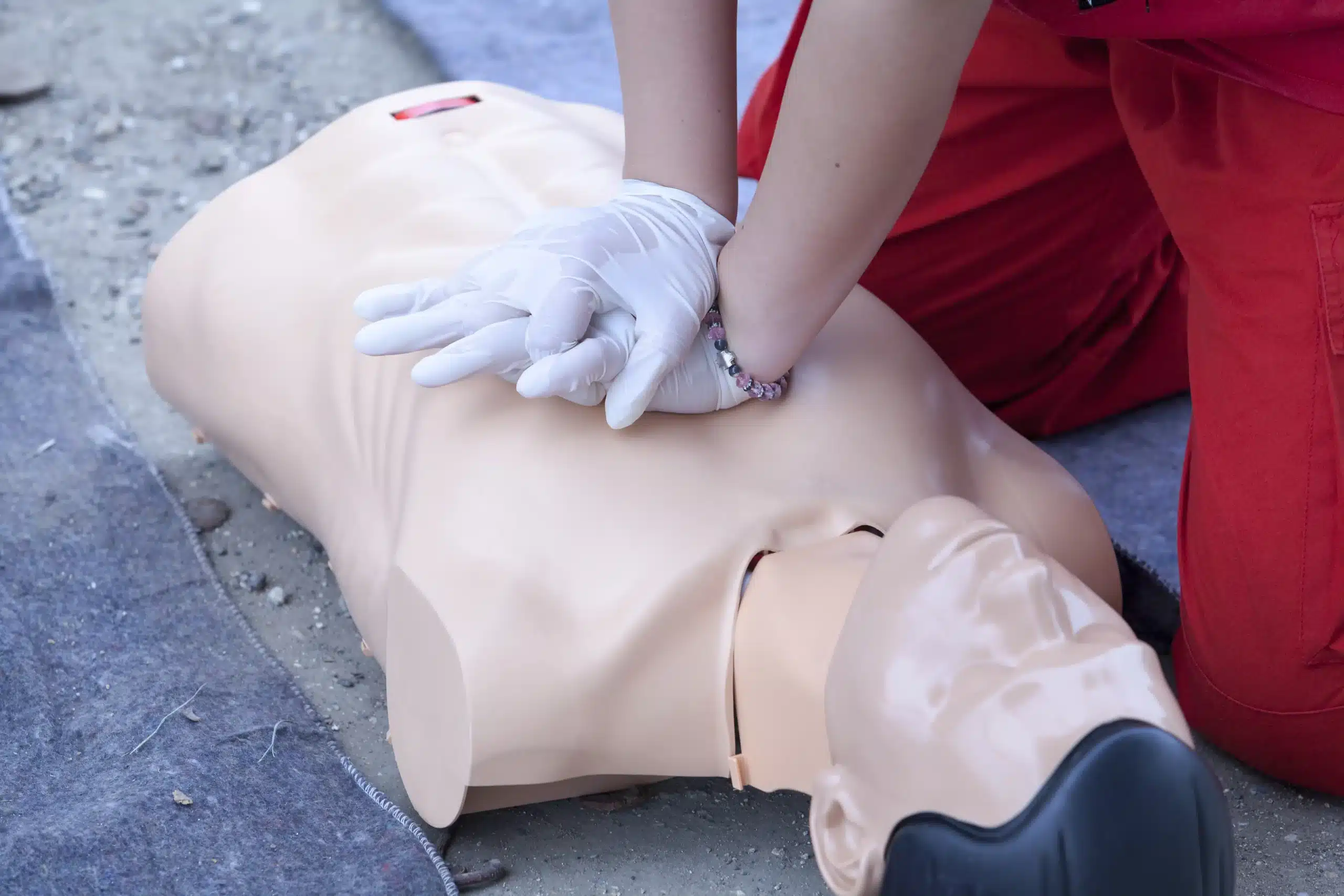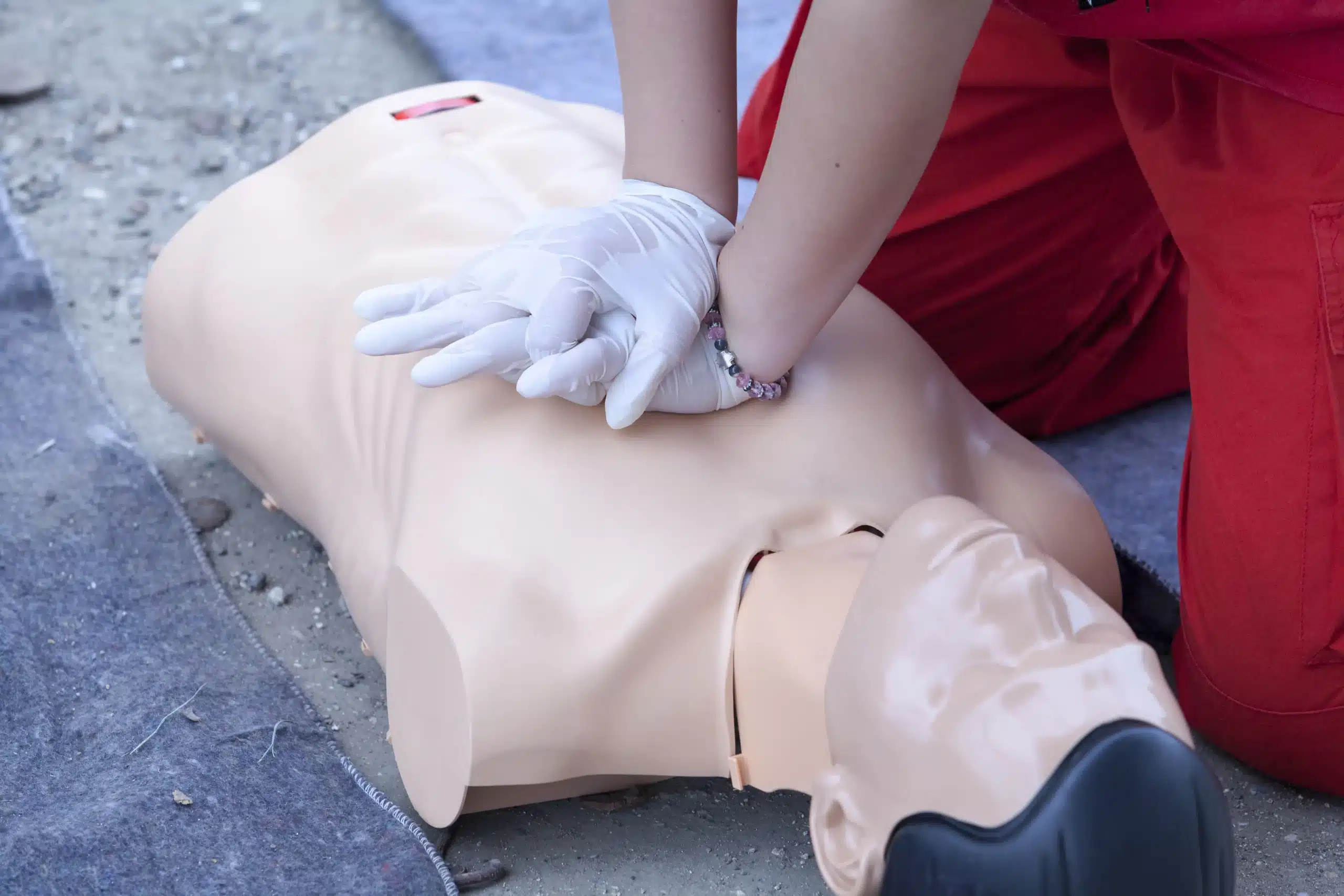In times of crisis, knowing how to perform Basic Life Support (BLS) can be invaluable. It’s a skill set that empowers you to act quickly and confidently in medical emergencies. This guide will cover everything you need to know about BLS, from the core skills involved to finding “bls training near me.” We’ll also discuss the benefits of BLS certification, common myths, and how to choose the right training program. Whether you’re a healthcare provider, a concerned parent, or simply someone who wants to be prepared, this guide will help you understand the importance of BLS and how to get certified.
Key Takeaways
- BLS skills empower everyone: These skills are essential for healthcare providers and valuable for anyone who wants to help in an emergency. Knowing BLS can give you the confidence to assist family, friends, or even strangers.
- Finding a course that works for you is simple: With various options, including in-person, blended, and online learning, you can find a BLS course that fits your schedule and learning style. Look for programs aligned with the American Heart Association or American Red Cross.
- Stay current to make a real difference: Regular practice and refresher courses are essential for maintaining your BLS skills and ensuring you’re prepared to respond effectively in a real-life emergency. Consider convenient options like the RQI program for flexible online skills sessions.
What is BLS Training and Why Do You Need It?
Basic Life Support (BLS) training equips you with the skills to respond to life-threatening emergencies. It’s the foundation for saving lives, focusing on immediate intervention for cardiac arrest, strokes, and other emergencies. But it’s not just for healthcare professionals—anyone can benefit from knowing BLS.
Key BLS Skills
BLS certification covers essential skills like using an automated external defibrillator (AED), clearing airways, and performing CPR. You’ll learn how to recognize the signs of a heart attack or stroke and provide assistance to someone who is choking. These skills can make a real difference in those crucial moments before professional help arrives. High-quality CPR is one of the most important aspects of BLS, and studies show effective chest compressions can significantly improve survival rates.
Why BLS Matters for Healthcare Professionals and Everyone Else
For healthcare providers like doctors, nurses, and EMTs, BLS certification is often a job requirement. It ensures they have the fundamental skills to handle emergencies effectively and provide the best possible patient care. But BLS isn’t just for medical professionals. Parents, teachers, coaches, and anyone who interacts with the public can benefit from this training. Knowing BLS can give you the confidence to act quickly and potentially save a life, whether at home, work, or out in the community. It empowers you to be a vital link in the chain of survival. For those in the healthcare field, BLS training provides a foundational understanding of patient care during emergencies. It’s a core skill set that contributes to a safer environment for both patients and colleagues.
Common BLS Myths
One common misconception is that BLS training is only for medical professionals. This simply isn’t true. While it’s essential for healthcare providers, anyone can take a BLS course and learn these lifesaving skills. Another myth is that BLS certification takes a huge time commitment. Many providers offer streamlined courses that fit busy schedules. Finally, some people believe BLS certification is a one-time deal. In reality, recertification is typically required every two years to ensure your skills are up-to-date. This refresher is crucial for staying proficient and confident in your ability to respond effectively in an emergency. You can find more information about the importance of BLS here.
Find BLS Training Near You
Finding the right BLS training program is easier than you think. With various options available, from traditional classrooms to online courses, you can find a program that fits your schedule and learning style. This section will guide you through finding BLS training near you.
Local and Online Options
When searching for a BLS course, you’ll likely find several formats. Traditional classroom-based training offers a structured learning environment with in-person interaction and hands-on practice. Blended learning programs combine online coursework with in-person skills sessions, offering flexibility and practical application. Fully online courses provide the ultimate convenience, allowing you to learn at your own pace from anywhere with an internet connection. Consider which format best suits your learning preferences and schedule.
Evaluating Training Centers
Before committing to a BLS training program, take some time to evaluate potential training centers. First, ensure the program is accredited and follows the latest BLS guidelines. Look for programs aligned with the American Heart Association (AHA) or the American Red Cross, as these are widely recognized. Compare program costs, schedules, and locations to find a course that works for you. Reading reviews from past participants can also offer valuable insights.
Top BLS Training Providers
Several reputable organizations offer BLS training courses. Here are a few providers to consider:
Folsom CPR Classes
Folsom CPR Classes offers a range of AHA-certified courses, including BLS, ACLS, and PALS. They provide various scheduling options and a low-price guarantee. Serving Folsom, Citrus Heights, and Sacramento, CA, they are a convenient local option. Check out their BLS course for more information.
American Heart Association
The American Heart Association (AHA) sets the standards for BLS training and offers various courses through certified training centers. You can find AHA-certified courses near you on their website.
American Red Cross
The American Red Cross is another trusted provider of BLS training. They offer courses nationwide, focusing on practical skills. Visit their site to find a class in your area.
National CPR Foundation
The National CPR Foundation provides various BLS training options, including online and blended learning formats. Their courses are designed to be accessible and flexible.
ProTrainings
ProTrainings offers a variety of online courses, including BLS certification. Their online format allows you to learn at your own pace.
What Happens in a BLS Training Course?
BLS training courses cover essential life-saving techniques, including CPR, recognizing and responding to life-threatening emergencies, using an AED, and relieving choking. Let’s break down what you can expect during a typical BLS course.
Course Structure and Duration
BLS certification courses offer flexibility with in-person and blended learning formats (online and in-person). This allows you to choose the style that best fits your schedule and learning preferences. A blended learning course typically involves completing the theoretical coursework online at your own pace, followed by an in-person session for hands-on skills practice and assessment. Whether you choose in-person or blended learning, the BLS certification is valid for two years. Some courses are also designed specifically as renewals for those with existing certifications.
Hands-on Practice and Skill Assessment
BLS courses aren’t just about theory—they emphasize practical application. You’ll participate in hands-on training sessions to develop and refine your skills in CPR, AED use, and other critical procedures. These courses include a written exam to test your knowledge and a hands-on skills assessment to evaluate your proficiency in performing these life-saving techniques. This combination of theoretical knowledge and practical skills ensures you’re well-prepared for real-world emergencies.
Certification and Renewal
Upon successful completion of the course and assessments, you’ll receive your BLS certification, typically valid for two years. Recertification is available for those within 30 days of their certification’s expiration date. While obtaining BLS certification does require a time commitment, the valuable skills and knowledge you gain are well worth the effort. Remember, having up-to-date BLS certification can make a significant difference in emergency situations.
Get the Most Out of Your BLS Training
So you’re ready to sign up for Basic Life Support training—great! Now, how can you ensure you’re getting the best value and maximizing the impact of your certification? Here are a few things to keep in mind:
Costs and Discounts
One of the first questions people ask is, “How much does BLS certification cost?” It’s true that cost can be a factor, but think of BLS training as an investment in your skills and the well-being of others. It’s more affordable than you might think, and many training centers offer discounts. For example, Folsom CPR Classes has a low price guarantee, and some providers offer discounts for group classes. Don’t let cost be a barrier—check with various training centers to find the best fit for your budget. The long-term benefits far outweigh the initial cost of BLS certification.
Benefits Beyond Certification
BLS certification is more than just a credential on your resume. It equips you with the confidence and skills to respond effectively in emergencies. This can be invaluable in a healthcare setting. Even outside of a professional context, BLS training empowers you to assist family, friends, or even strangers in critical situations. Knowing you can make a difference provides peace of mind and a sense of preparedness. BLS training for healthcare providers enhances life-saving capabilities.
Group Training Options
If you’re looking to train with colleagues, friends, or family, consider group training options. Many training centers offer discounts for groups, making it a cost-effective way to learn together. Plus, learning alongside others can create a supportive and engaging learning environment. Some hospitals and clinics offer group BLS training, so check with your employer or local healthcare facilities to see what’s available. This can be a convenient and affordable way to get certified with your team.
Prepare for and Maintain Your BLS Skills
Getting ready for your BLS class and keeping your skills fresh afterward takes a little planning. These tips can help you feel confident and prepared for your training and beyond.
Preparation Tips
Before you sign up for a BLS course, do a little research. Look for an accredited program that follows the latest American Heart Association guidelines for BLS training. This ensures you’re learning the most up-to-date techniques. Think about the class schedule and location, too. Choose a training center that fits your availability and is easy to get to. Folsom CPR Classes offers courses daily in over 60 cities, making it convenient to find a class near you.
Make the Most of Your Training
Once you’re in the class, ask questions! A good instructor will welcome your questions and give you feedback on your technique. The more you interact, the more you’ll learn. It’s also helpful to choose a program with plenty of hands-on practice. This will help you build muscle memory and confidence in performing BLS skills.
Keep Your Skills Sharp
BLS certification isn’t a one-time thing. It’s important to stay current with the latest guidelines and refresh your skills regularly. Consider taking a refresher course before your certification expires to stay sharp. Regular practice will help you feel prepared to respond effectively in a real emergency. You can also check out our RQI program for flexible, online skills sessions. Don’t let your skills lapse – staying current could make a real difference.
Related Articles
- BLS for Healthcare Providers in Citrus Heights – Folsom CPR Classes
- Top-Rated BLS Courses in Citrus Heights – Folsom CPR Classes
- BLS Classes in Folsom: Your Certification Guide – Folsom CPR Classes
- Busting CPR Myths and Saving Lives – Folsom CPR Classes
- BLS Certification Folsom: Your 2024 Guide – Folsom CPR Classes
Frequently Asked Questions
Is BLS certification only for healthcare professionals? Not at all! While it’s definitely a must-have for doctors, nurses, and other healthcare providers, BLS training is valuable for anyone. Parents, teachers, coaches, and anyone who wants to be prepared for an emergency can benefit from learning these lifesaving skills.
How long does BLS certification last, and how do I renew it? BLS certification is typically valid for two years. To renew, you’ll need to take a recertification course before your current certification expires. This ensures your skills are up-to-date with the latest guidelines.
What’s the difference between online, blended learning, and in-person BLS courses? In-person courses provide a traditional classroom setting with direct interaction with the instructor and other students. Blended learning combines online coursework with in-person skills sessions, offering flexibility and hands-on practice. Fully online courses allow you to complete the coursework at your own pace from anywhere with internet access. Choose the format that best suits your learning style and schedule.
How can I find a reputable BLS training provider near me? Start by checking with nationally recognized organizations like the American Heart Association and the American Red Cross. They have websites where you can search for certified training centers in your area. Also, look for local providers like Folsom CPR Classes, which offer AHA-certified courses and often have flexible scheduling options. Reading reviews and comparing program costs can also help you make an informed decision.
What if I’m nervous about the skills assessment in a BLS course? It’s completely normal to feel a little apprehensive about the skills assessment. Remember, BLS courses are designed to build your confidence. Instructors provide guidance and feedback throughout the course, and the hands-on practice sessions give you plenty of opportunities to refine your technique before the assessment. The goal is to prepare you to respond effectively in a real emergency, and a good instructor will support you every step of the way.
